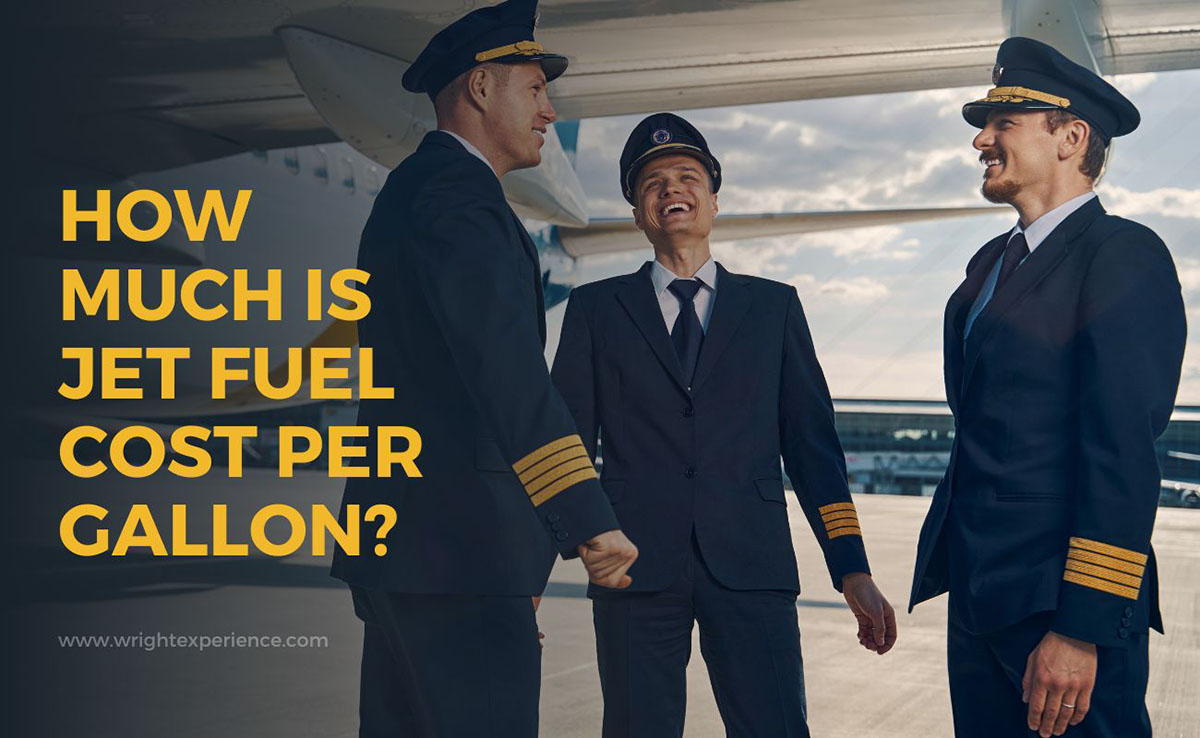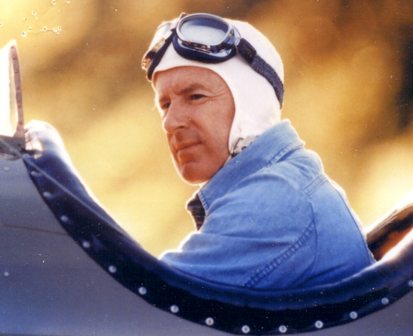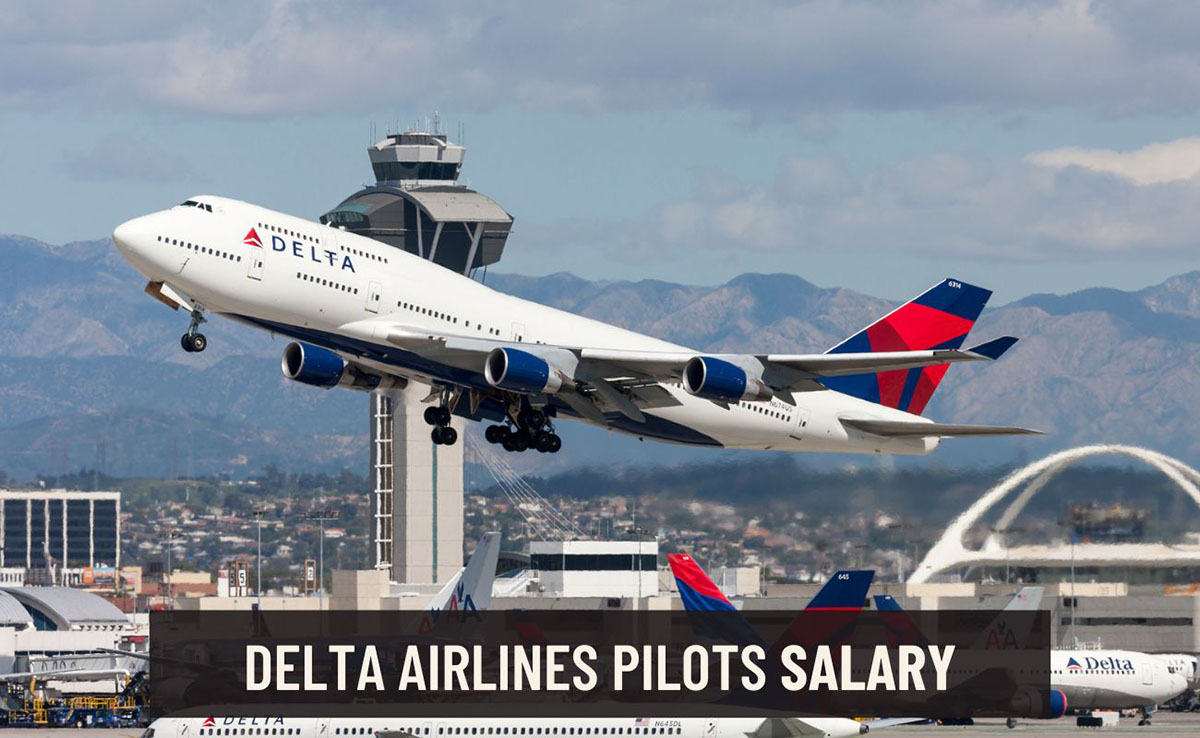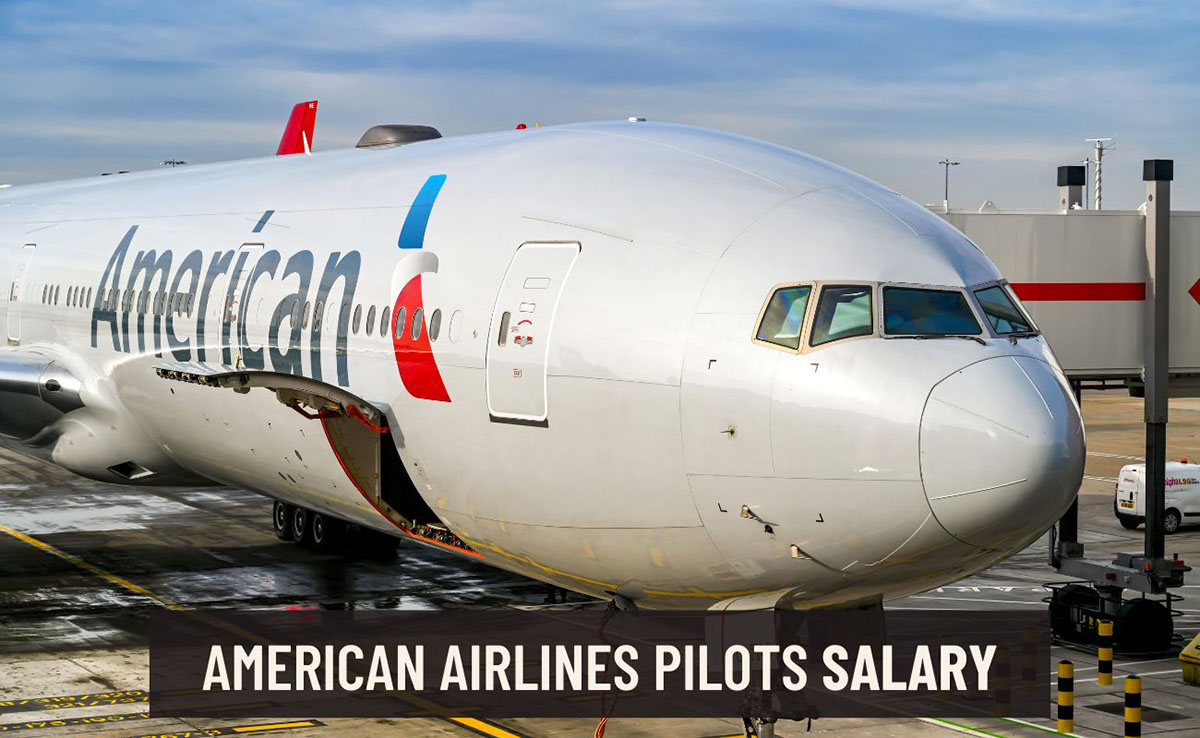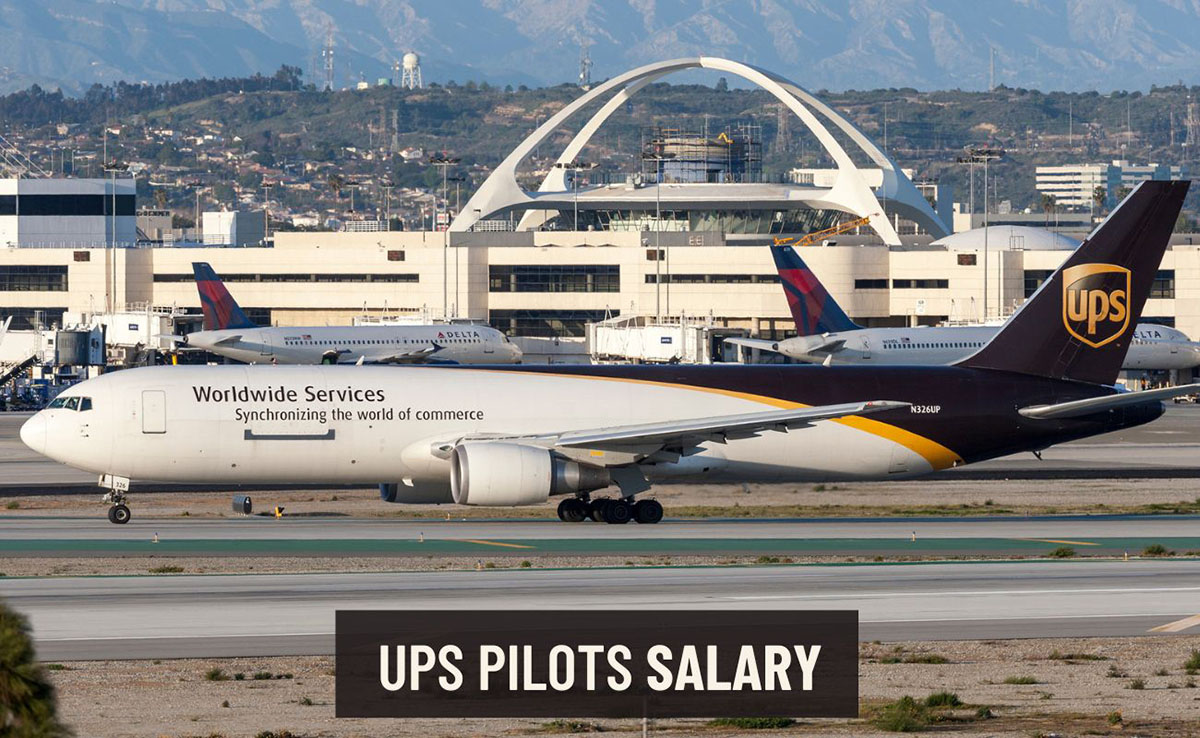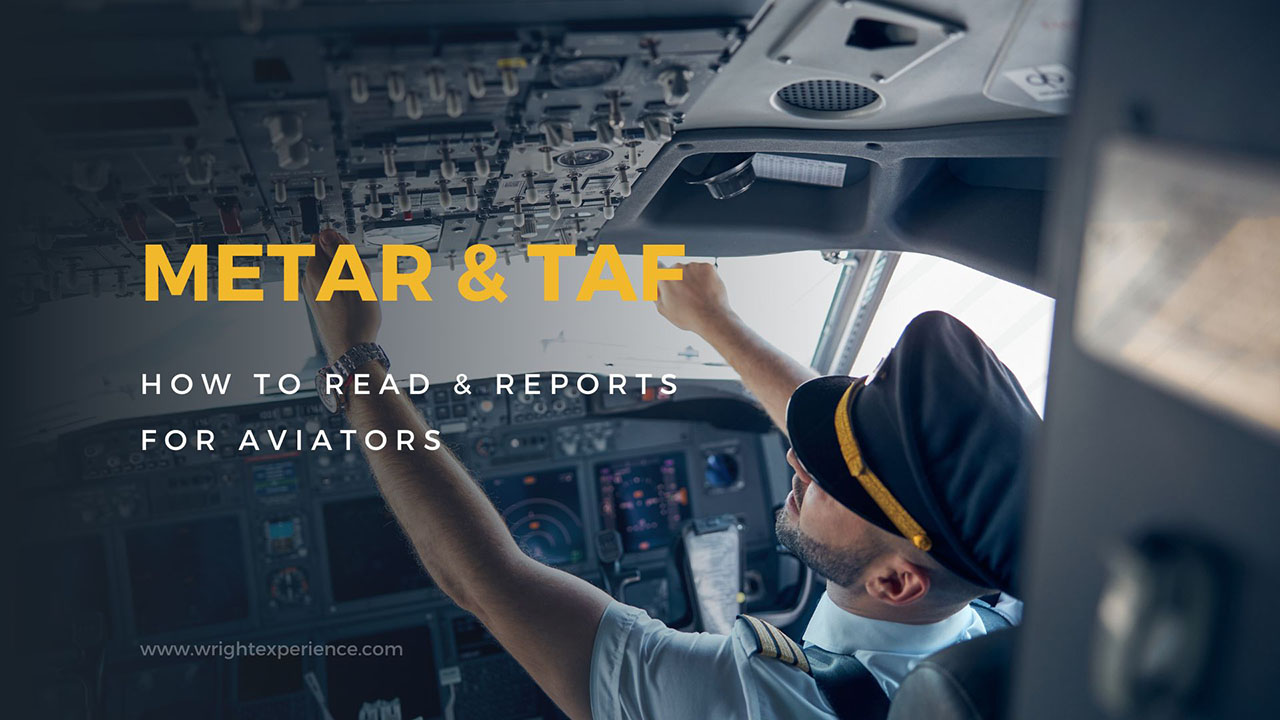Ever dreamed of soaring through the clouds, commanding a mighty aircraft? Sounds pretty awesome, right? But before you strap on those wings, one question might be circling overhead: how much can you actually make?
It’s not a simple answer because this industry involves somewhat unique calculations and scales. With 33 years of crisscrossing the boundless blue from the cockpit, I’ll help you unpack the nuts and bolts of this issue. It’ll give you a look into how much pilots make per flight and the whole year, as well as some lesser-known perks that come with the job.
In this article:
How Much Do Airline Pilots Make?
According to the latest US Bureau of Labor Statistics data from May 2022, the median salary for airline pilots and copilots was a whopping $211,790. If you snag a captain’s seat on a scheduled airliner, you’re looking at an even sweeter annual mean wage of $230,740. Important note: this is the median, not the average salary.
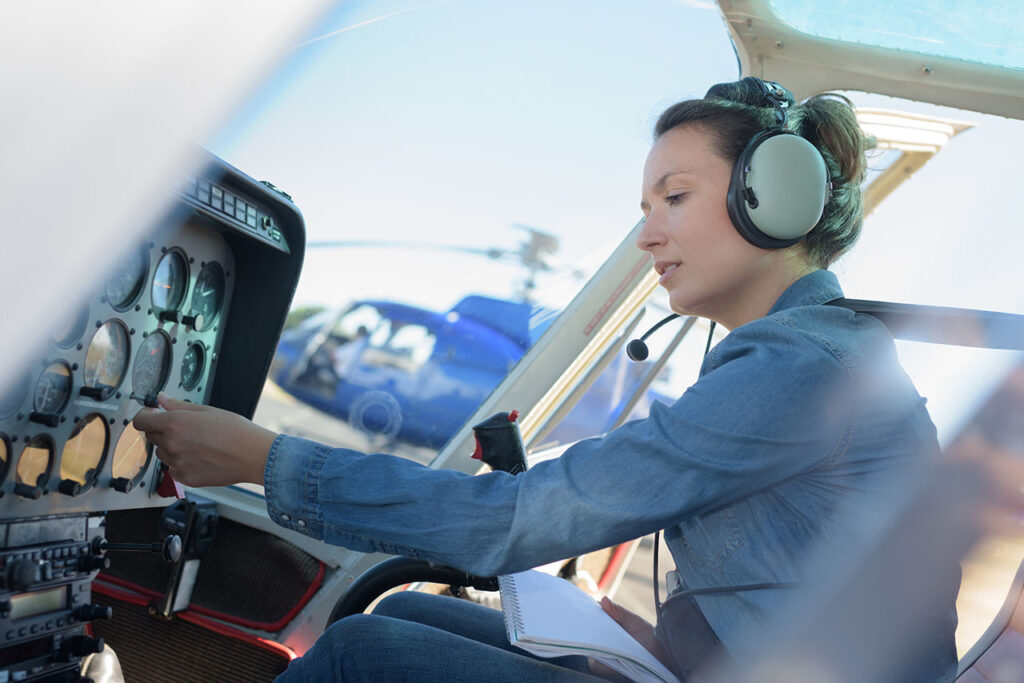
When you stack this against the median wage for all air transportation workers ($95,010), pilots clearly lead the pack. Of course, there’s always a spread in salaries. The bottom 10% of airline pilots make less than $98,680, while the top 10% soar past $239,200.
Now, for the commercial pilots out there, the median annual wage in 2022 was $103,910. Still very respectable, and with experience and specific certifications, you can climb the pay ladder significantly. The top 10% of commercial pilots rake in over $217,530 annually.
The good news doesn’t stop there. The trend for pilot wages is definitely on an upward trajectory. Comparing 2022 data to 2020, we see a jump from $160,970 to $211,790 for airline pilots, copilots, and flight engineers. That’s a 31% increase in just two years.
For those who don’t know, airline pilots are the ones flying your regular commercial flights. They ferry passengers and cargo across the globe in a more scheduled manner. On the other hand, commercial pilots fly the less-trodden path with unscheduled flights. This includes everything from charter flights to crop dusting.
Now, let’s take a look at the pilot salaries of some major airlines!
Major Airlines
These pilots at big carriers like Delta, American, and United Airlines are often at the top of the salary ladder. Here, you’ll captain jumbo jets across vast networks, commanding the highest salaries in the airline industry. Expect a steady climb as your experience takes flight as well. It’s normal to reach impressive six-figure earnings after a few years.
Here’s a glimpse at the average salary at major carriers for first officers:
| Airline | Year 1 | Year 6 | Year 12 |
| Air Canada | $56,000 | $157,000 | $190,000 |
| Alaska Airlines | $100,000 | $192,000 | $212,000 |
| American Airlines | $90,000 | $224,000 | $234,000 |
| Allegiant Air | $57,000 | $128,000 | $154,000 |
| Cathay Pacific | $69,732 | $95,712 | $106536 |
| Delta Air Lines | $92,000 | $220,000 | $232,000 |
| Emirates | $67,956 | $78768 | $81,132 |
| Frontier Airlines | $75,000 | $145,000 | $174,000 |
| Hawaiian Airlines | $81,000 | $241,000 | $273,000 |
| JetBlue Airways | $94,000 | $167,000 | $189,000 |
| Southwest Airlines | $84,000 | $171,000 | $191,000 |
| Spirit Airlines | $95,000 | $175,000 | $197,000 |
| Sun Country Airlines | $88,000 | $161,000 | $195,000 |
| United Airlines | $91,000 | $219,000 | $240,000 |
| WestJet Airlines | $56,000 | $116,000 | $128,000 |
Here are what captains make at major international airlines:
| Airline | Year 1 | Year 6 | Year 12 |
| Air Canada | $277,000 | $286,000 | $298,000 |
| Alaska Airlines | $278,000 | $290,000 | $306,000 |
| American Airlines | $314,000 | $327,000 | $342,000 |
| Allegiant Air | $163,000 | $197,000 | $230,000 |
| Cathay Pacific | $133,308 | $149,832 | $168,744 |
| Delta Air Lines | $325,000 | $338,000 | $354,000 |
| Emirates | $97,008 | $112,452 | $126,576 |
| Frontier Airlines | $197,000 | $225,000 | $262,000 |
| Hawaiian Airlines | $359,000 | $374,000 | $392,000 |
| JetBlue Airways | $246,000 | $262,000 | $283,000 |
| Southwest Airlines | $241,000 | $256,000 | $274,000 |
| Spirit Airlines | $256,000 | $273,000 | $306,000 |
| Sun Country Airlines | $220,000 | $252,000 | $294,000 |
| United Airlines | $323,000 | $336,000 | $352,000 |
| WestJet Airlines | $136,000 | $177000 | $210,000 |
Regional Airlines
Pilots of these carriers deal with smaller planes, hopping shorter routes. While salaries at regional airlines start lower than those of their major counterparts, remember, experience matters. As you rack up flight experience, your annual salary can take off.
Check out how much commercial pilots make at some regional carriers at the FO role:
| Airline | Year 1 | Year 6 | Year 12 |
| Air Wisconsin | $60,000 | $66,000 | $70,000 |
| Endeavor Air | $100,000 | $119,000 | $120,000 |
| Horizon Air | $90,000 | $108,000 | $108,000 |
| Mesa Airlines | $102,000 | $112,000 | $112,000 |
| Piedmont Airlines | $96,000 | $114,000 | $114,000 |
| PSA Airlines | $146,000 | $165,000 | $187,000 |
| Republic Airways | $93,000 | $98,000 | $98,000 |
And the average salary of captains at the same regional airlines:
| Airline | Year 1 | Year 6 | Year 12 |
| Air Wisconsin | $102,000 | $121,000 | $156,000 |
| Endeavor Air | $150,000 | $167,000 | $189,000 |
| Horizon Air | $149,000 | $168,000 | $191,000 |
| Mesa Airlines | $153,000 | $170,000 | $192,000 |
| Piedmont Airlines | $154,000 | $172,000 | $195,000 |
| PSA Airlines | $82,000 | $92,000 | $104,000 |
| Republic Airways | $145,000 | $163,000 | $180,000 |
Cargo Airlines
The pay of those unsung heroes starts modest but can climb quickly. Some airlines, like UPS, offer lower starting salaries but reward loyalty with significant increases over time.
Here’s a view of how much pilots make a year at cargo airlines as FOs:
| Airline | Year 1 | Year 6 | Year 12 |
| Air Transport Int’l | $92,000 | $168,000 | $200,000 |
| Atlas Air | $87,000 | $135,000 | $164,000 |
| FedEx Express | $84,000 | $202,000 | $233,000 |
| Kalitta Air | $117,000 | $175,000 | $203,000 |
| Skylease Cargo | $71,000 | $99,000 | $113,000 |
| United Parcel Service | $52,000 | $212,000 | $244,000 |
And these are the average pilot salaries for their captains:
| Airline | Year 1 | Year 6 | Year 12 |
| Air Transport Int’l | $147,000 | $241,000 | $281,000 |
| Atlas Air | $219,000 | $254,000 | $295,000 |
| FedEx Express | $276,000 | $311,000 | $326,000 |
| Kalitta Air | $158,000 | $258,000 | $301,000 |
| Skylease Cargo | $105,000 | $145,000 | $166,000 |
| United Parcel Service | $52,000 | $326,000 | $341,000 |
Charter Airlines
Salaries of charter pilots can be diverse, often starting lower than those of major airlines. But remember, flexibility and adventure are often part of the package.
Have a look at the average pilot salary at some charter airlines for FOs:
| Airline | Year 1 | Year 6 | Year 12 |
| Omni Air International | $128,000 | $174,000 | $201,000 |
| Miami Air Int’l | $47,000 | $87,000 | $98,000 |
| iAero Airways | $97,000 | $133,000 | $159,000 |
And the annual wage of their captains:
| Airline | Year 1 | Year 6 | Year 12 |
| Omni Air International | $192,000 | $255,000 | $298,000 |
| Miami Air Int’l | $96,000 | $122,000 | $163,000 |
| iAero Airways | $168,000 | $202,000 | $235,000 |
How Pilot Earnings Are Calculated
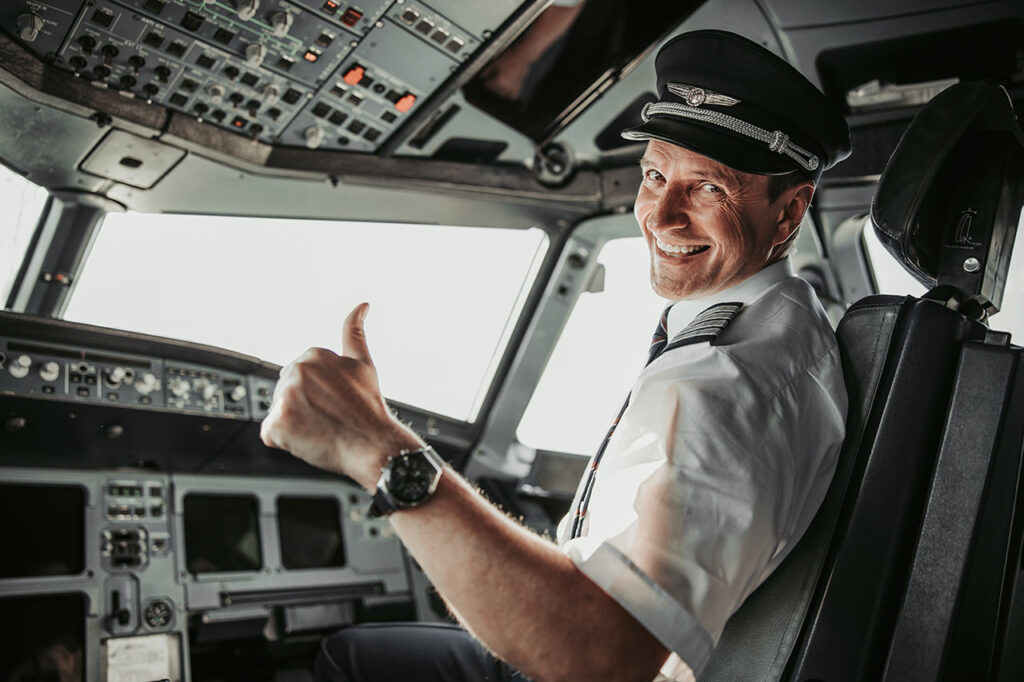
Calculating a pilot’s earnings isn’t as straightforward as it might seem at first glance.
Most airlines set up pay scales for each position – whether you’ll be in the captain’s seat or as the first officer. This rate depends on the type of aircraft and how many years of experience (YOE) you have.
This “hourly rate” gets multiplied by the number of hours flown to determine your “base salary.” On top of that, there are various bonuses and extra compensation to consider.
Base Rate Factors
Position
The captain’s chair not only comes with more responsibility but also a heftier paycheck. They are the pilot in command (PIC), after all. First officer pilot salaries are always lower. However, they often see their salaries grow as they gain experience and eventually step into the captain’s role.
Type of Aircraft Flown
Piloting an aircraft type like the Airbus A380 is nothing like navigating a smaller regional jet. So, unsurprisingly, how much pilots make an hour at the helm of larger aircraft is typically higher than a regional jet.
Years of Experience
Experience pays, literally. A pilot’s earnings typically jump at significant career milestones. These experience levels reflect growing expertise and the value pilots bring to their airlines. Year 5-6 often marks a significant jump. And by year 10-12, you’re cruising at altitude with some seriously impressive earnings.
Flight Hours
Airline pilots typically average around 75 hours of actual flying time per month. But remember, the job doesn’t end there. They put in an additional 150 hours prepping flight plans, studying weather patterns, and ensuring everything’s shipshape before takeoff.
Union Influence
Most pilots are part of unions who advocate for their best interests. These unions negotiate new contracts with airlines every few years. And due to a national pilot shortage, let’s just say 2023 was a banner year for many.
For example, a tentative $12 billion agreement will raise Southwest Airlines pilot salaries by 29% starting in 2024. After that, they will see annual pilot salary increases of 4% through 2028, plus a 3.25% bump in 2028.
American Airlines pilots enjoyed a similar windfall, with their compensation package growing over 46% by 2027. This includes double-digit percentage raises each year as well as increased retirement benefits.
Bonuses and Compensations
Beyond their base salary, pilots can tap into a variety of bonuses and compensations. They help sweeten the deal of their career in the skies. Here are some of the most common extras pilots might see on their paychecks.
Overtime Pay
Pilots don’t just clock out and go home like typical 9-to-5ers. When they go beyond their scheduled flight hours, overtime kicks in. I saw so many times the weather causing delays or extra flights during peak season. This bonus offers a nice bump to earnings as longer hours can translate into significantly higher pay.
Per Diem
Pilots often spend nights away from home, hopping from city to city. To compensate for these expenses, airlines typically offer per diem allowances.
Think of it as a daily stipend to cover meals, accommodation, and other incidentals. The amount can vary depending on the location and duration of your layover, but it’s definitely a welcome addition to your wallet.
Extra Pay for International Flights
Crossing borders comes with its own set of challenges and responsibilities, and yes, extra pay. That is why taking off for exotic destinations overseas isn’t just a perk. It can also mean bigger bucks for pilots at international airlines.
The amount of bonuses for international flights depends on distance, time zones crossed, and potential language barriers.
Sign-on and Resigning Bonuses
This is an industry where experience and skill are at a premium. Airlines often offer signing and retention bonuses to attract and keep top talent.
It’s pretty straightforward. Sign-on bonuses are welcome aboard gifts for pilots they newly hire. Loyalty pays off in aviation, too. There are bonuses awarded annually or at specific milestones to encourage existing pilots to stick around. These lump-sum bonuses can definitely give their bank accounts a nice boost.
Profit-Sharing Plans
It’s a way for pilots to directly benefit from the airline’s success. Essentially, when the airline does well, so do you.
These annual bonuses work like this: the airline sets aside a portion of its annual earnings and then divides it up among eligible employees, including pilots. The exact share you get depends on factors like your contract, performance, and the overall company performance. But believe me, a good year for the airline can translate to a very good year for your wallet.
Other Airline Pilot Salary Schemes
There are also carriers like Southwest that do things a bit differently when it comes to average pilot salary.
Instead of hour rates, they base pilot pay on something called “flight segments.” These segments typically span short distances, say around 243 miles. For each completed segment, pilots receive a set “trip for pay” (TFP) amount. If the flight goes beyond that mileage, they earn a little extra depending on how many additional miles they traveled.
However, the underlying concept remains the same. The more hours of flight time a pilot completes, the higher their average salary will be.
Common Benefits for Pilots
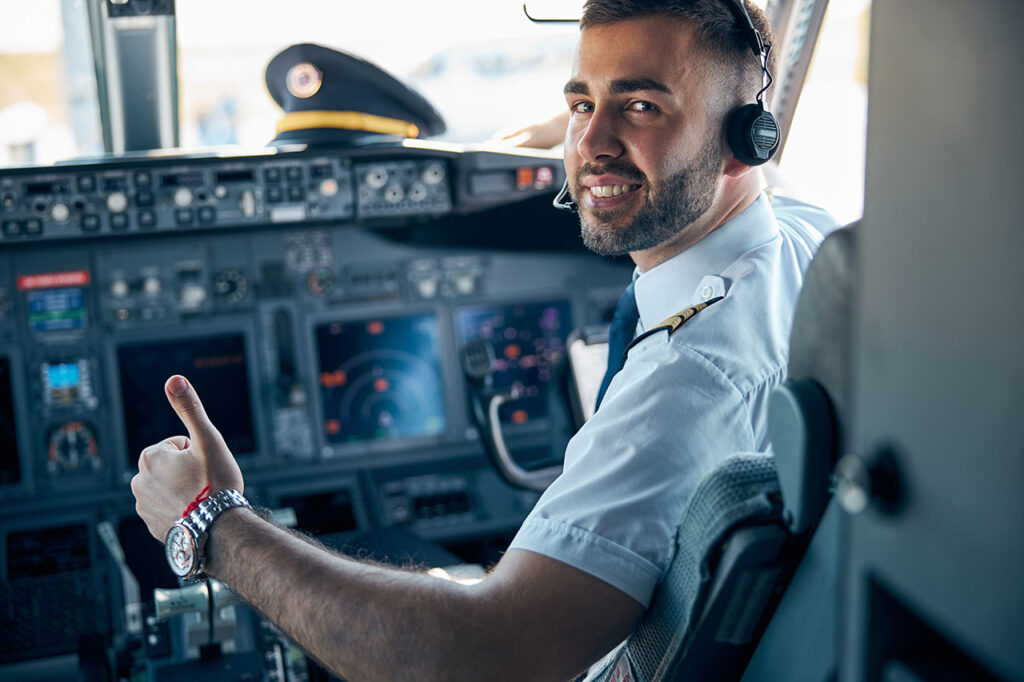
Pilots don’t just enjoy competitive salaries. They also have access to a suite of excellent benefits that round out their compensation packages.
Health Insurance
This is an essential one. Most airlines offer top-notch health insurance plans for pilots and their families. They cover medical expenses and provide peace of mind. So, pilots like me can focus on flying high, knowing our health is well taken care of.
Travel Benefits
These benefits are as good as they sound. They’re reduced or free tickets for you and your family, and even the occasional space-available upgrade.
They allow you and your family to explore the world at a fraction of the cost. Make sure to understand the extent of these benefits, how to use them, and any limitations or blackout dates that might apply.
Disability Insurance
Flying is a physically demanding job, and commercial airline pilots must be acutely aware of the risks coming from it.
Disability insurance is a nice safety net option for them. It provides financial protection if you’re ever unable to fly due to illness or injury. Look for it when you sign a contract so you can have the resources to weather unexpected storms in your career.
Retirement Plans
While you may love flying all year round, the day you’ll need to touch down in retirement will come. From my entire career in the cockpit, if there’s one piece of advice I’d give, it’s to pay attention to your retirement plan options the moment you start.
Commercial airlines typically offer a mix, from 401(k)s to pensions, often with matching contributions. Don’t see it as a way to stash away a portion of your annual earnings. It’s the best way to secure your future after your flying days are over.
Other Benefits
Here are some other goodies you might encounter:
- Time Off: Pilots typically enjoy generous vacation time. However, airlines need to ensure smooth operations, so there are rules and limitations. Pilots often have to submit bids for their preferred dates beforehand on a monthly or quarterly basis. Seniority plays a big role – experienced pilots typically have first dibs on their desired dates.
- Insurance Beyond the Essentials: Some airlines offer additional insurance options like dental, vision, and even long-term care.
- Pilot Assistance Programs: Don’t overlook tuition assistance and professional development programs. These are your pathways to growth, both in the cockpit and out.
Tips for How to Becoming a Top-Earning Pilot
Be the Ace in the Sky
Hone your skills right from pilot training days, master procedures, and keep your knowledge razor-sharp. But in the aviation industry, being an ace goes beyond technical expertise.
This might sound obvious, but remember, safety first, always. Maintain a healthy lifestyle with a balanced diet, regular exercise, and enough sleep. Your body and mind are your instruments, so treat them right. And let’s be clear. Please ditch the tobacco and alcohol. They’re no friends to a top pilot, and certainly not for airline pilot earnings.
Be a Crew Player
No matter the type of operation and the type of aircraft, this isn’t a solo act. Be reliable, show up on time, and be a teammate your fellow pilots can count on. A positive attitude goes a long way, too.
Also, airlines value employees who align with their corporate values. Do your research and understand the company culture.
Do Your Research
Knowing where you want to land is half the battle. Dive into what different airlines offer, not just in pay but in culture and routes.
Your ideal job might not be the highest paying if it means a better quality of life. As smart prospective pilots, use your network. Sometimes, the best intel comes from those who’ve been there. Information is power, especially when it comes to your job security.
Negotiate Like a Pro
Remember, you’re bringing value to the table. Know your worth, what you want, and what you have to offer. Be willing to compromise during the job interview, but don’t undervalue yourself.
While salary scale and title might be set, benefits can be flexible. Prioritize what matters most and negotiate strategically to increase your annual income.
Don’t sign on the dotted line without understanding every comma and clause. I’m talking minimum guarantees, per diems, overtime rules – the whole shebang.
Read it, re-read it, and then have another pilot (ideally from your union) dissect it for you if needed. Trust me, a clear head now saves a world of headaches later, especially with the current pilot shortage.
Frequently Asked Questions
Do Pilots Receive a Minimum Guarantee?
Yes, most American airlines offer a monthly minimum guarantee, usually around 75 hours. It’s like a paycheck safety net, even if you don’t fly the full quota. Some airlines even offer daily guarantees for extra peace of mind.
Are There Maximum Fly Hours?
The FAA has the final say on this. Pilots can’t fly more than 32 hours in a week. Their flight time is also capped at 100 hours per month and 1,000 hours in a year. These rules are in place to make sure pilots aren’t overworked and can always fly safely.
How About the Work Age for Pilots?
In 2007, the FAA bumped the retirement age for airline pilots to 65. The previous limit was 60. And for pilots outside Part 121 airlines, well, there is no forced retirement age.
How Do International Pilot Salaries Compare to American Airline Pilot Salaries?
It’s a mixed bag. Some higher, some lower, some similar. For instance, pilots in Canada can make around $200,000 a year, while their counterparts in South America might earn closer to $70,000. It varies widely based on the airline and the region.
What About Similar Job Opportunities Beside Pilots?
There are a bunch of different paths you can take with your pilot certification outside of flying for airlines.
Flight instructors are a popular option. Though the pay lands a bit lower than airline pilots, it’s still pretty lucrative with awesome potential earnings. Entry-level flight instructors in the US can make more than $90,000 a year.
Conclusion
So there you have it, future aviators. This guide has hopefully given you a clear picture of a pilot’s salary. With hard work, dedication, and a little financial savvy, anyone can chart a course toward a rewarding career filled with adventure and a satisfying paycheck.

